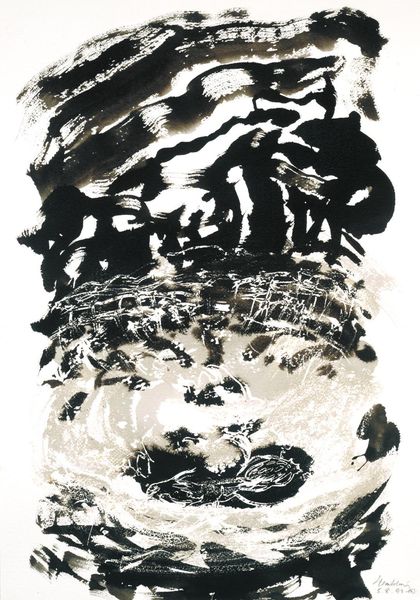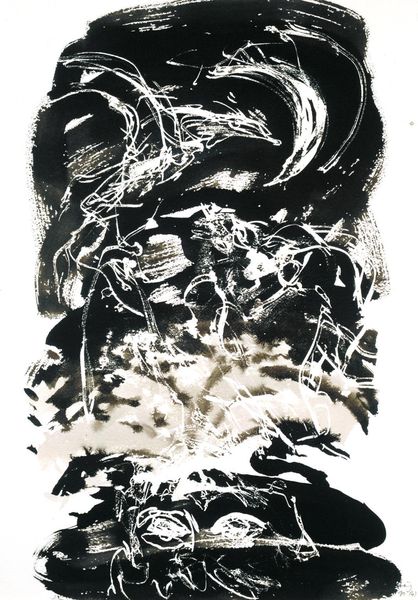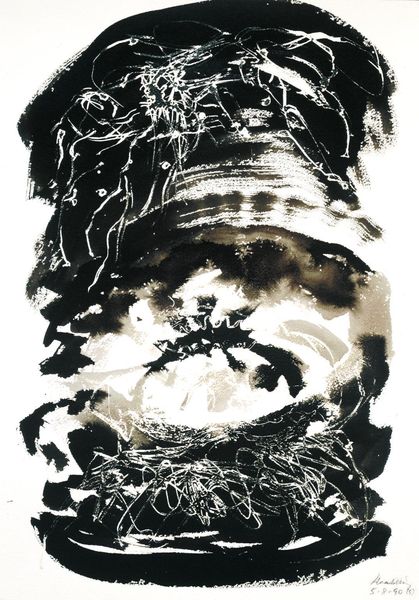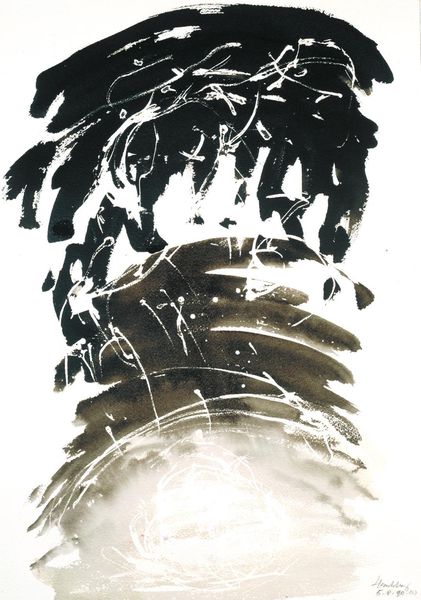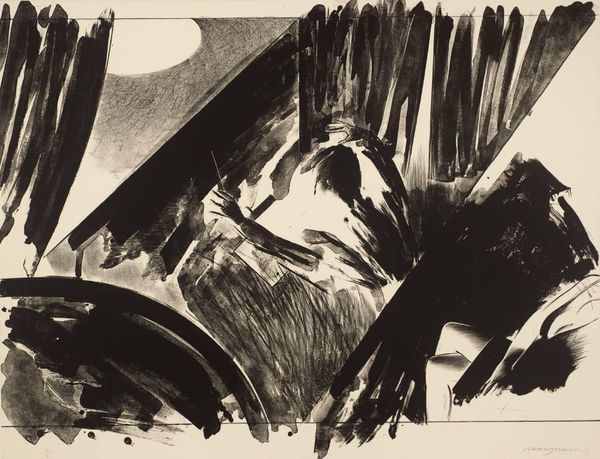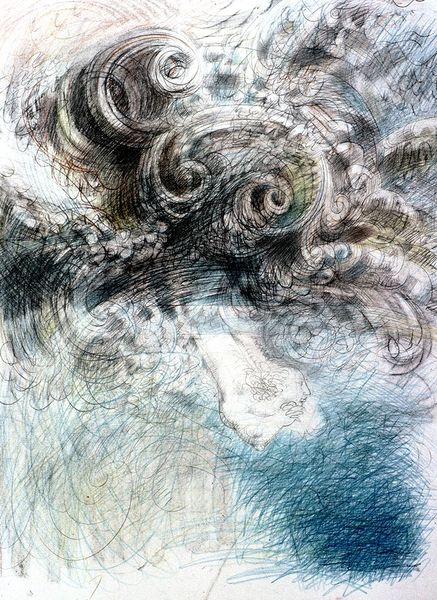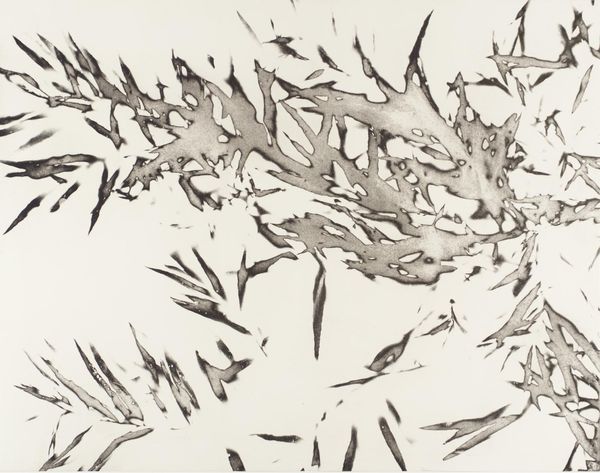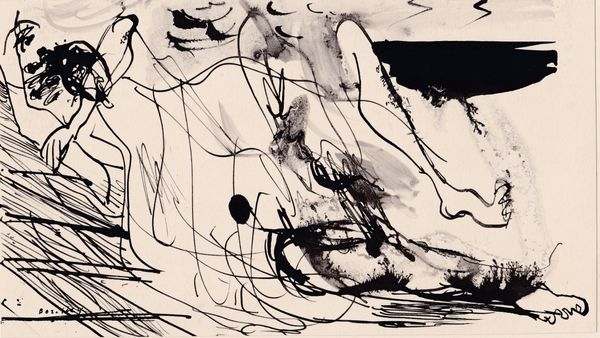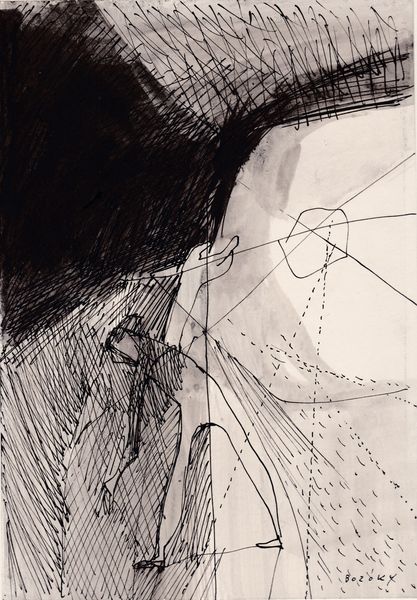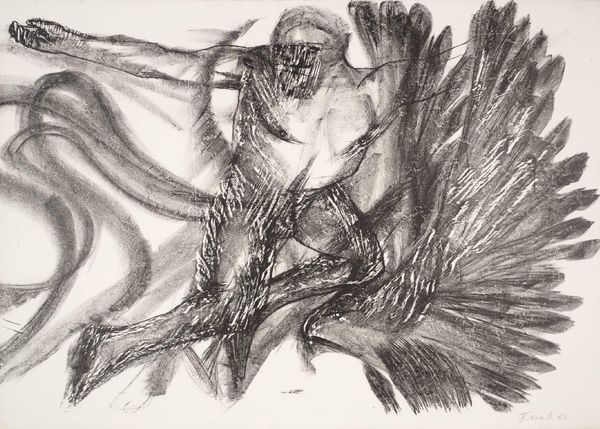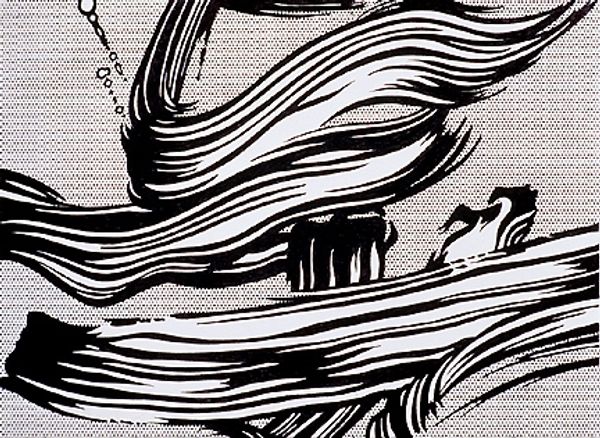
Dimensions: 22.86 x 12.7 cm
Copyright: Maria Bozoky,Fair Use
Curator: Maria Bozoky’s 1985 drawing, “The Revelation of St. John (V.13),” employs ink in a style that leans heavily into abstract expressionism, though with recognizable figurative elements. Editor: My initial reaction is that there is a frenetic energy in this drawing. The lines feel chaotic, even violent, and yet a somber figure emerges. Curator: The piece certainly sits within a fascinating cultural moment. Abstract expressionism, by the '80s, was a loaded term. Its claim to universality had been heavily critiqued for sidelining artists from marginalized groups. How do you see Bozoky, working within these existing movements? Editor: Precisely. It prompts a deeper exploration of who gets to represent these powerful, often destabilizing emotions. Looking closer, I see how gender plays a part. While working through a traditionally masculine form like Abstract Expressionism, Bozoky creates an aesthetic through her distinct line that still reads like a portrait with its subject at the forefront. Curator: Agreed. And thinking about the social impact of Abstract Expressionism at that moment - could you delve more deeply? Editor: It's difficult to detach the artist from the rise of neo-expressionism, where subjectivity and emotion returned to the canvas in a big way, post-minimalism. It raises complex questions around gender, too. Curator: I also find the biblical reference compelling given its period, considering what the title brings into play. 'The Revelation of St. John.' The ink and line work bring so much dramatic tension to what might be perceived to be a holy narrative. Editor: Absolutely. What resonates most with me is how Bozoky utilizes the visual language of the avant-garde to reinterpret ancient tales, while pushing for greater consideration of how artistic styles, medium, and social contexts have intersected. The tension speaks to this exact moment, but moreover what’s happening now as this drawing and other works push forward how we come to study art in both theoretical and practical senses. Curator: This makes one reconsider where institutions fit into such critical reevaluations. How can museum spaces promote intersectional narratives in a manner that engages broader social contexts? Editor: Well, there's much work to be done with respect to promoting conversations, with less reliance on one sole perspective. But returning to this very piece of art - "The Revelation of St. John (V.13)," continues to echo with complexities, inviting us to grapple with these intersections.
Comments
No comments
Be the first to comment and join the conversation on the ultimate creative platform.
